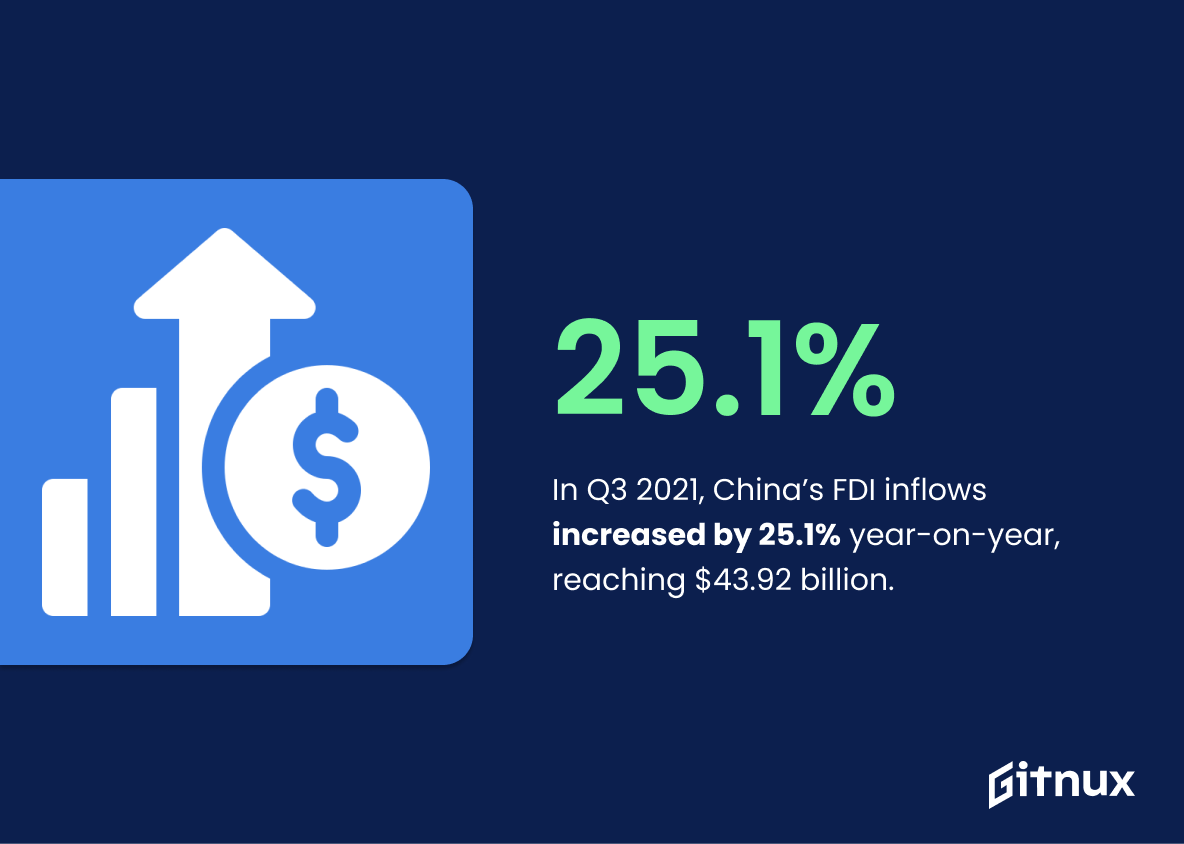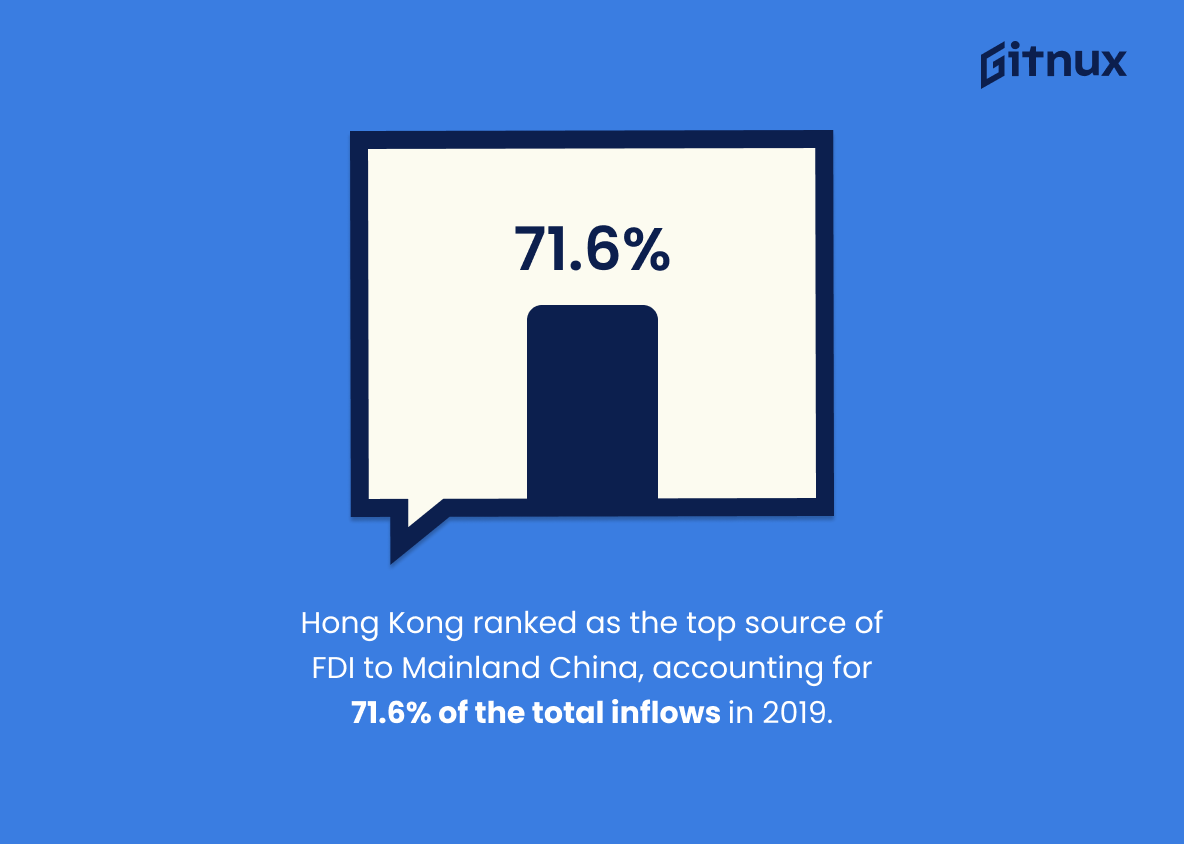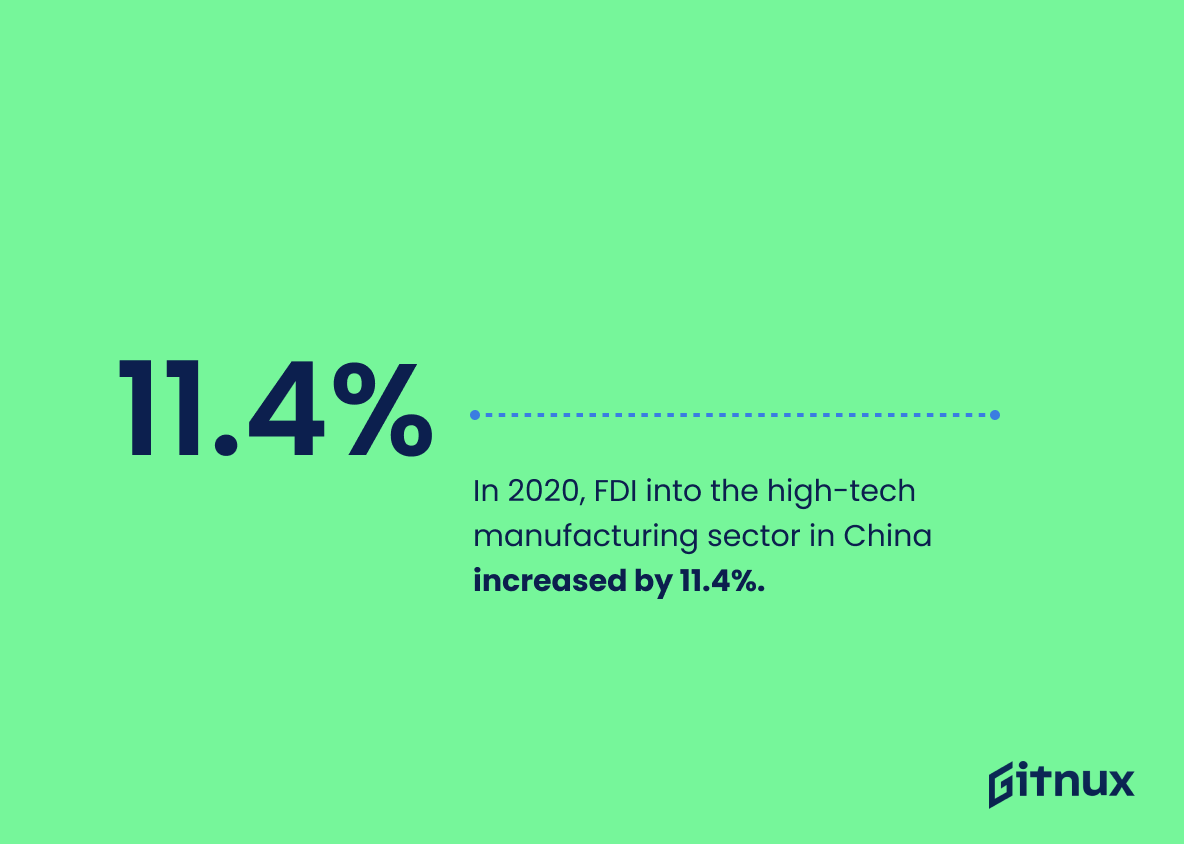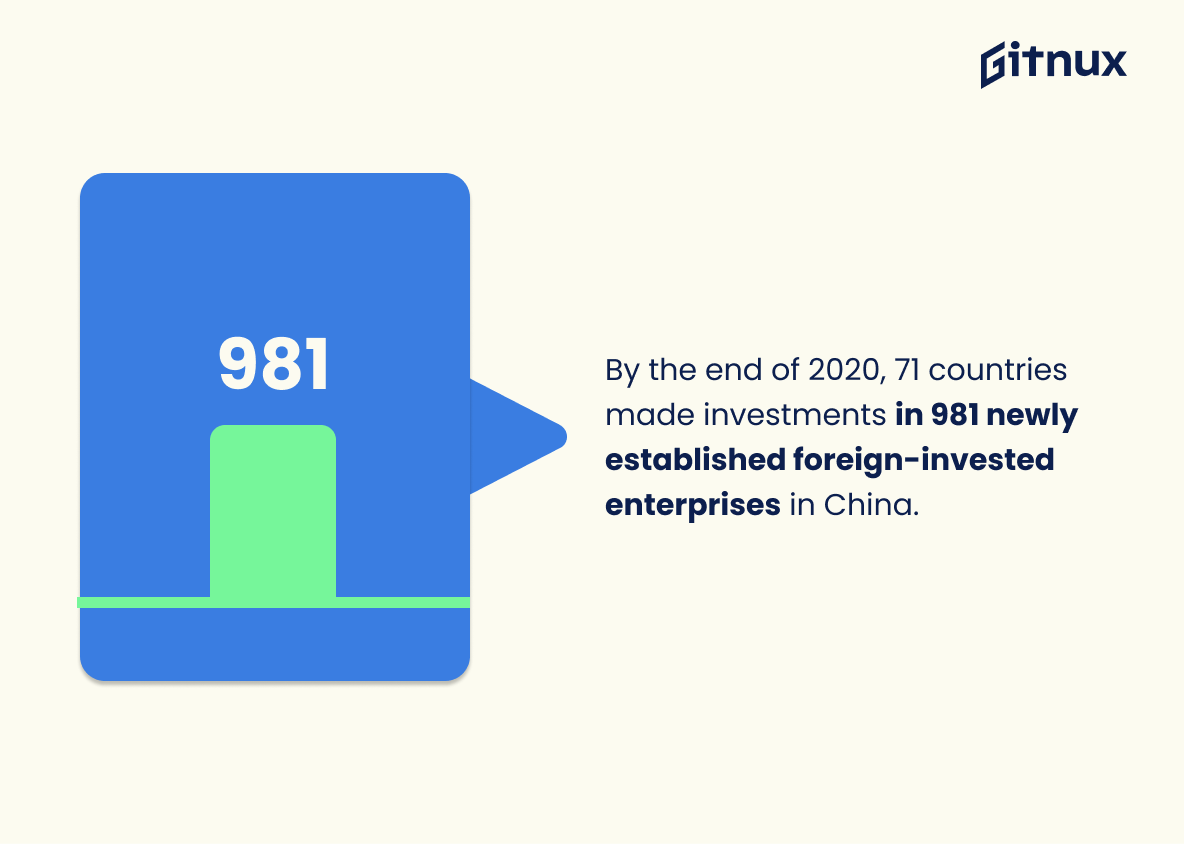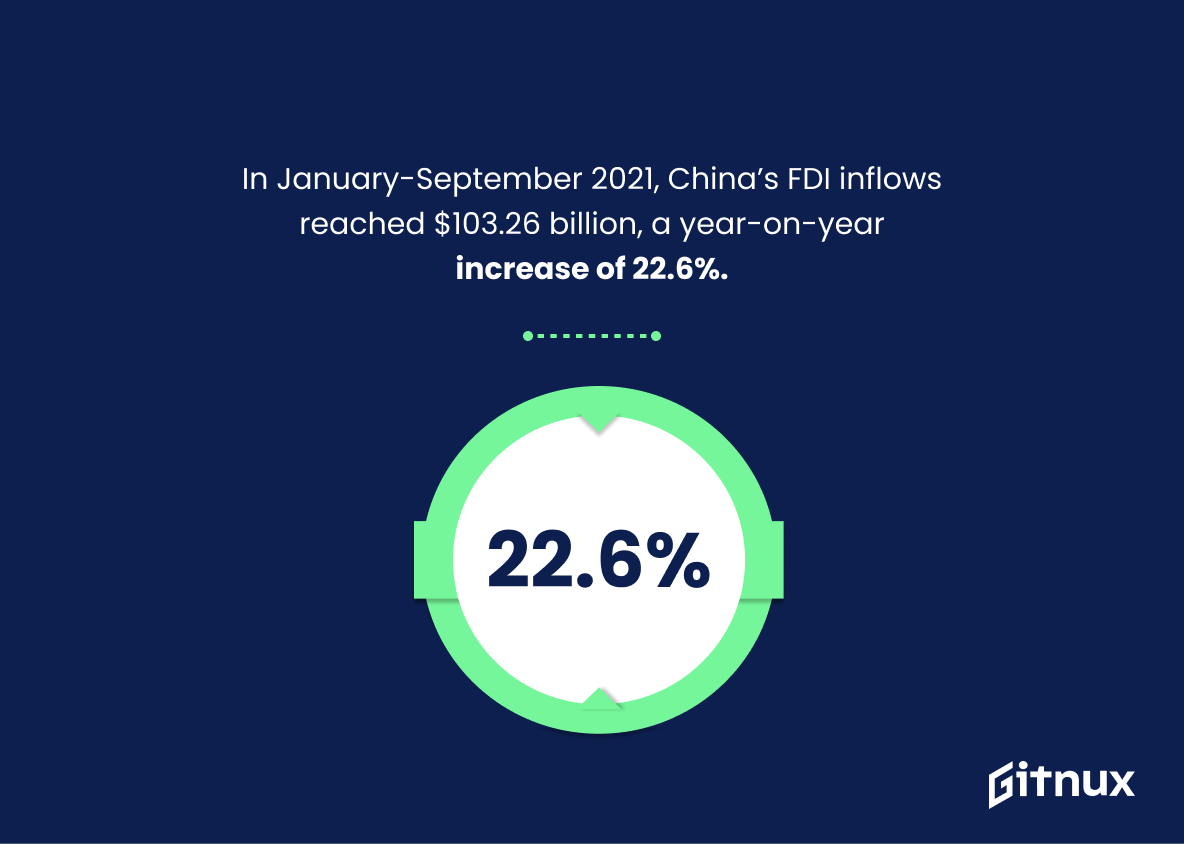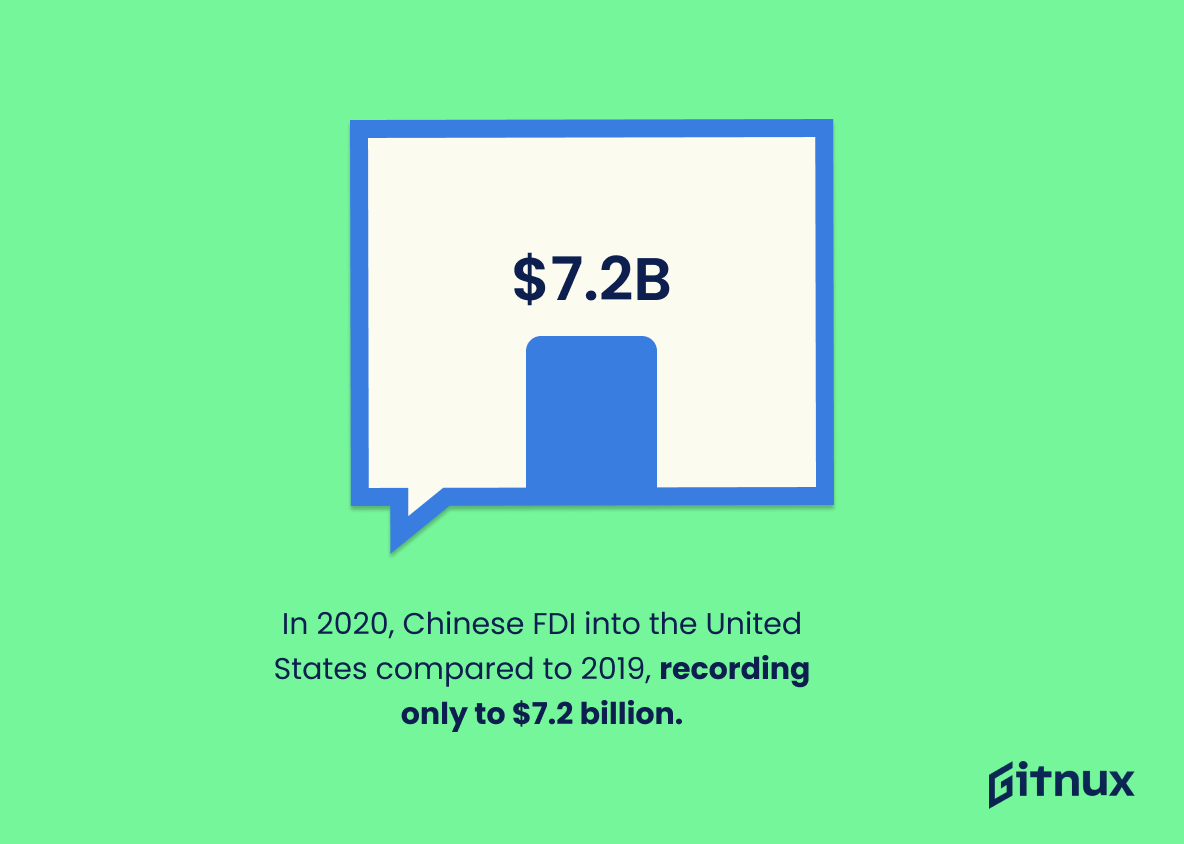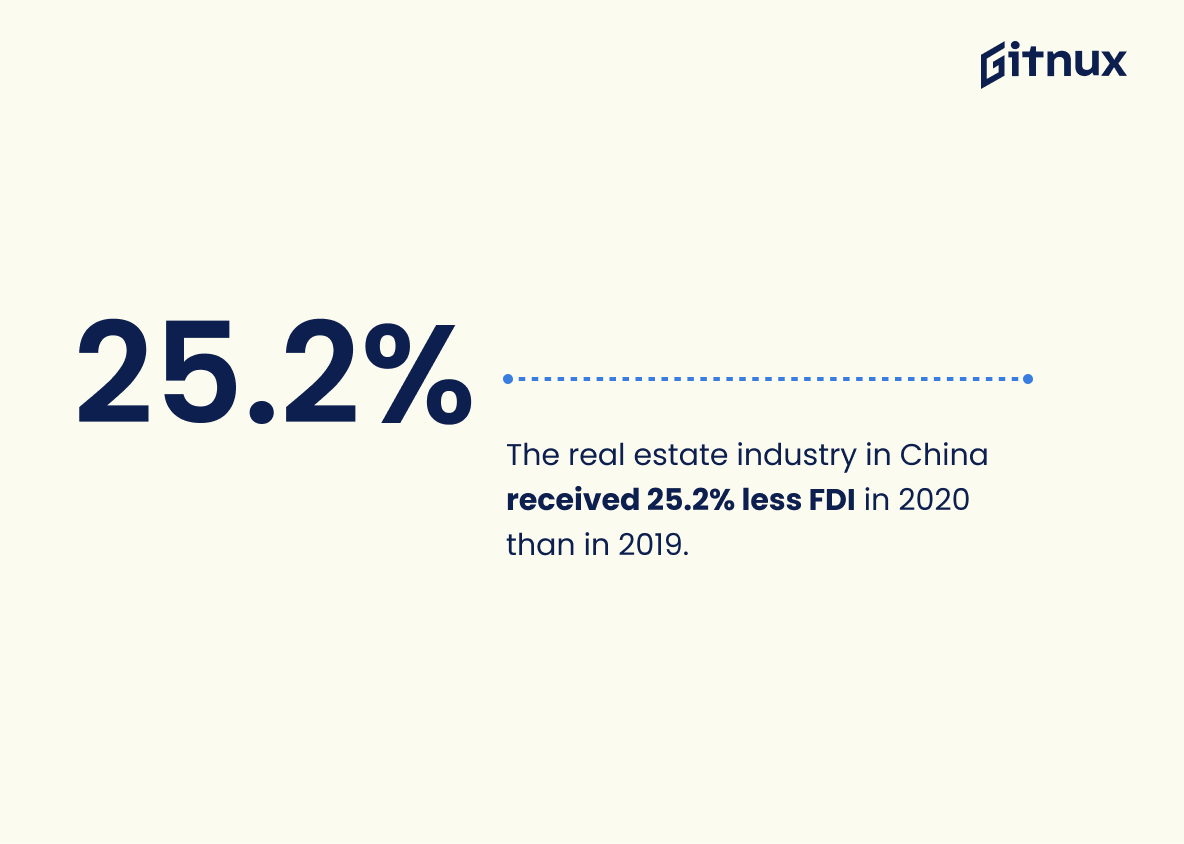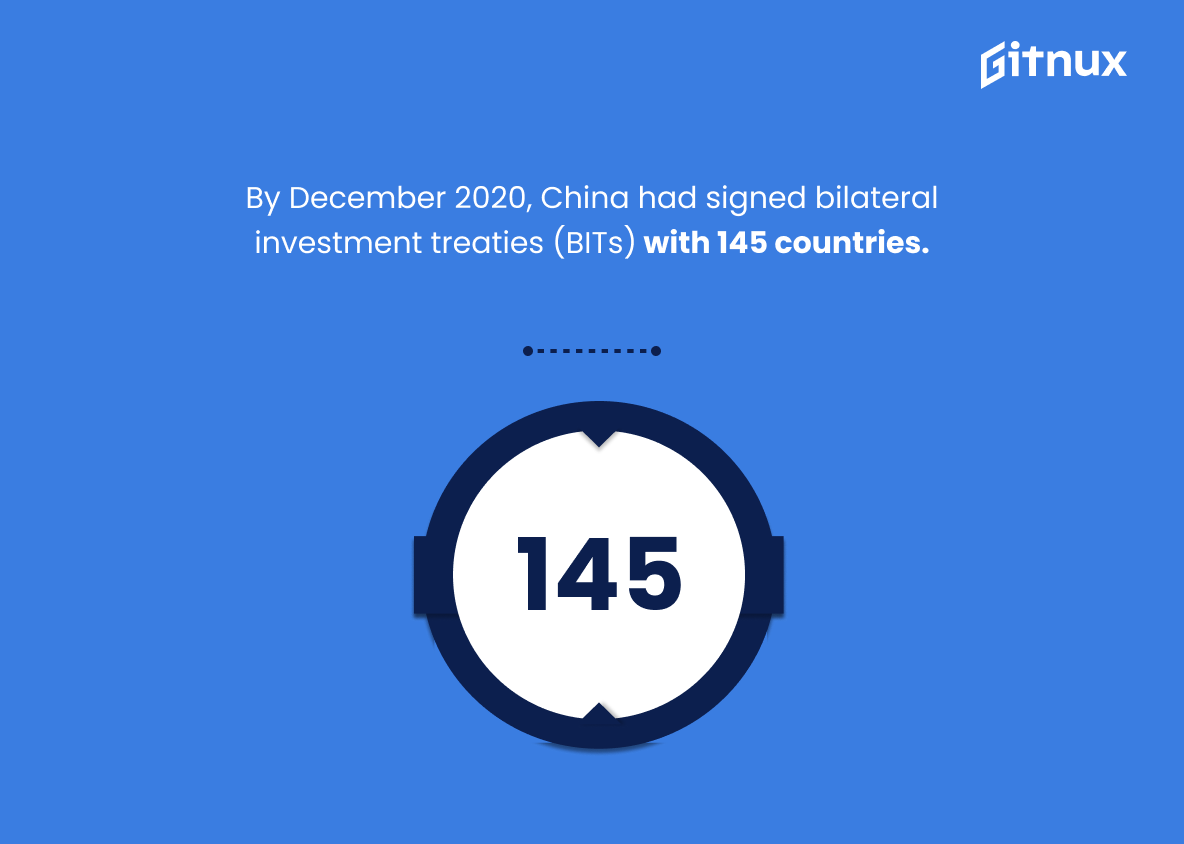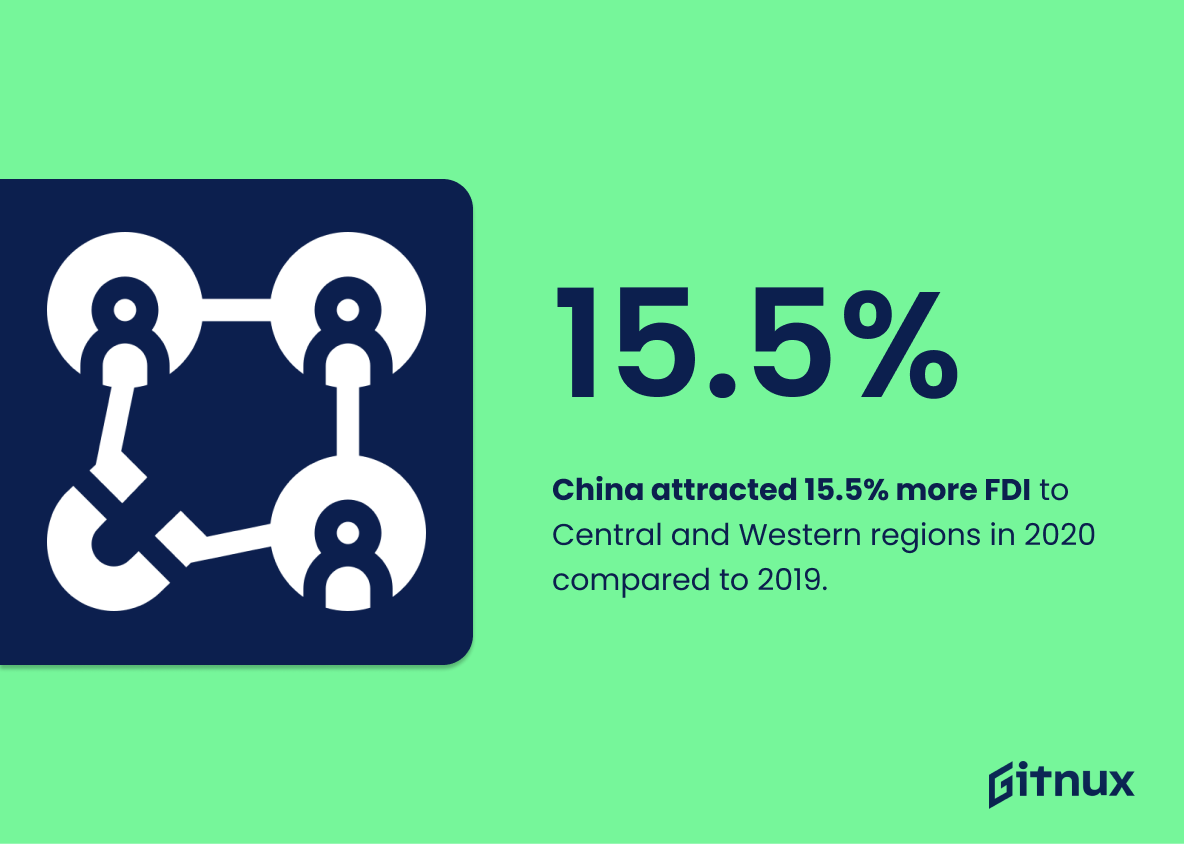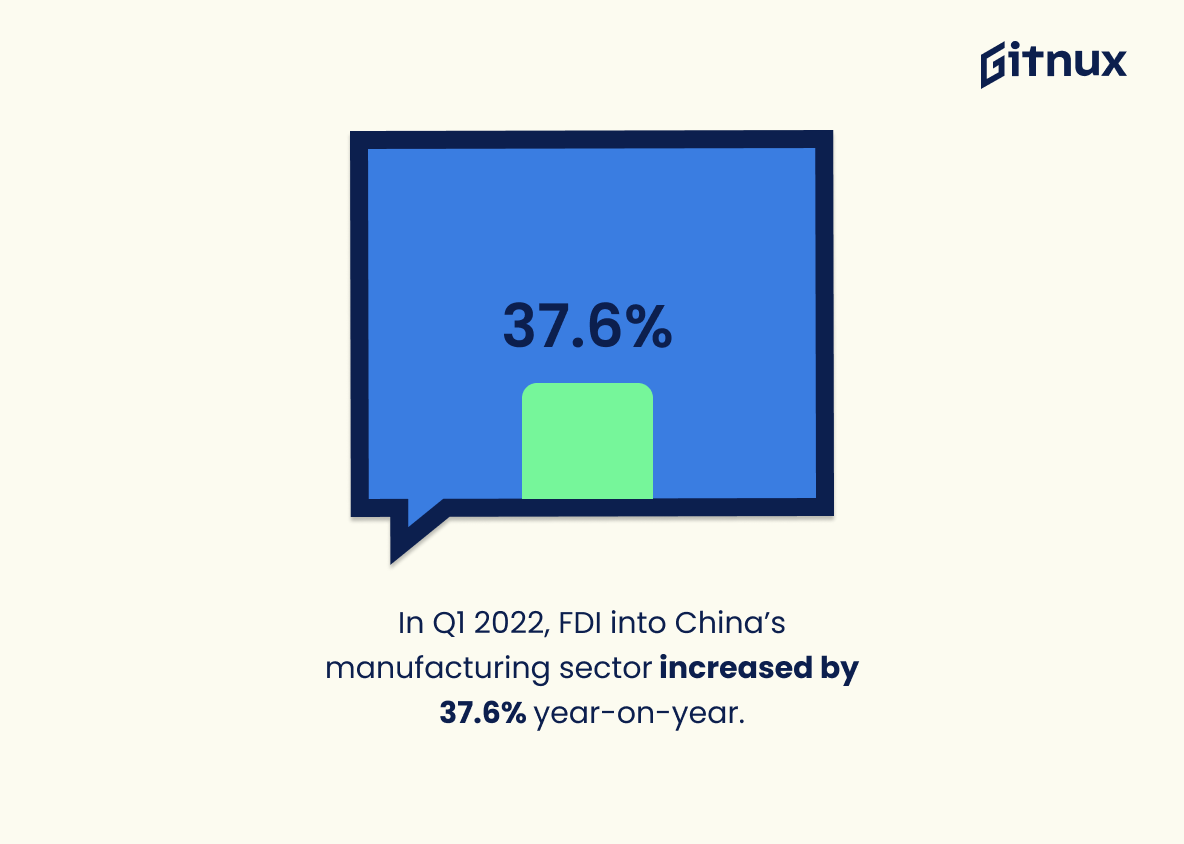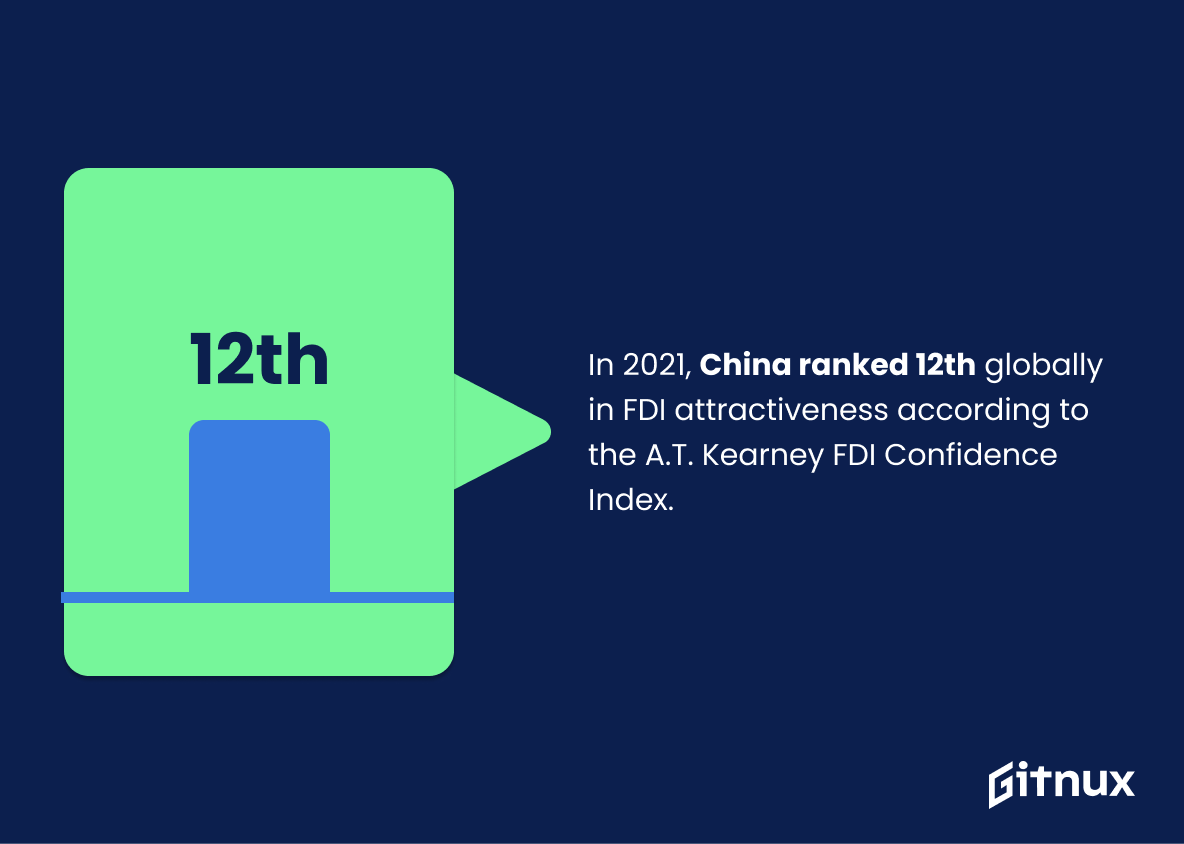China’s foreign direct investment (FDI) has been a major driver of economic growth in recent years. According to the latest statistics, China’s FDI inflows reached $163 billion in 2020 and its outward FDI stock was around $2.2 trillion. In addition, as of 2020, China was the world’s second largest destination and source of FDI with 5.9% of total global flows.
In Q3 2021 alone, Chinese FDI inflows increased by 25.1%, reaching $43.92 billion while Non-Financial Sector received the highest amount at 86%. Hong Kong ranked as top source for Mainland China investments accounting for 71% share followed by ASEAN countries which overtook European Union as biggest overseas investor with 894 million dollars worth investments last year despite Covid pandemic situation worldwide . The United States’ invested 13$billion into china whereas Chinese Investment into US dropped to 7$billion due to trade war between two nations but Belt & Road Initiative projects accounted for 13 percent outflows from china during same period . Real estate industry saw decline in FDIs compared to 2019 however manufacturing sector witnessed 37 % increase YoY basis till first quarter 2022 alongwith 48 % contribution towards overall Foreign Trade volume from foreign investors based enterprises within country borders . Moreover , according to AT Kearney index ,china ranks 12th globally on attractiveness scale when it comes about FDIs while having signed BITs treaties with 145 countries so far including Central & Western regions where 15 % more inflow is recorded than previous year respectively making it one among most lucrative destinations across globe today .
China Foreign Direct Investment Statistics Overview
In Q3 2021, China’s FDI inflows increased by 25.1% year-on-year, reaching $43.92 billion.
This statistic is a testament to the growing strength of China’s FDI inflows, indicating that the country is becoming increasingly attractive to foreign investors. The 25.1% year-on-year increase in FDI inflows is a clear sign that China is continuing to make strides in its efforts to attract foreign investment, and this is an important point to consider when discussing China’s FDI statistics.
Hong Kong ranked as the top source of FDI to Mainland China, accounting for 71.6% of the total inflows in 2019.
This statistic is a testament to the strong economic ties between Hong Kong and Mainland China, with Hong Kong being the largest source of FDI to the mainland. This highlights the importance of Hong Kong as a gateway for foreign investment into China, and the potential for further growth in the future.
In 2020, FDI into the high-tech manufacturing sector in China increased by 11.4%.
This statistic is a testament to the success of China’s high-tech manufacturing sector in attracting foreign direct investment. It shows that despite the global economic downturn caused by the COVID-19 pandemic, investors are still confident in the potential of China’s high-tech manufacturing sector. This is a positive sign for the Chinese economy and a sign that foreign direct investment in China is still strong.
By the end of 2020, 71 countries made investments in 981 newly established foreign-invested enterprises in China.
This statistic is a testament to the immense potential of China as a destination for foreign direct investment. It shows that despite the global economic downturn caused by the COVID-19 pandemic, China has still managed to attract investments from 71 countries, indicating the confidence of foreign investors in the Chinese economy. This is a clear indication that China is still a viable option for foreign investors, and that its economy is still strong and resilient.
In January-September 2021, China’s FDI inflows reached $103.26 billion, a year-on-year increase of 22.6%.
This statistic is a testament to the success of China’s FDI policies, indicating that the country is continuing to attract foreign investment despite the global economic downturn. It also shows that China is becoming an increasingly attractive destination for foreign investors, as the year-on-year increase of 22.6% demonstrates. This is an important point to consider when discussing China’s FDI statistics, as it highlights the country’s potential for further growth in this area.
In 2020, FDI into China’s service sector increased by 13.9%, with the information service industry witnessing an increase of 28.8%.
This statistic is a testament to the growing importance of China’s service sector in the global economy. It highlights the increasing investment in the information service industry, which is a key driver of economic growth and development. This data provides a valuable insight into the current state of China’s FDI and the potential for further growth in the future. It is an important indicator of the country’s economic health and its ability to attract foreign investment. This statistic is essential for understanding the current trends in China’s FDI and the potential for further growth in the future.
In 2020, Chinese FDI into the United States compared to 2019, recording only to $7.2 billion.
This statistic is a telling indication of the current state of Chinese FDI into the United States. It reveals that the amount of Chinese FDI into the United States has decreased significantly from 2019 to 2020, with a drop of over $20 billion. This is an important statistic to consider when discussing the overall trend of Chinese FDI into the United States, as it provides insight into the current state of the relationship between the two countries.
The real estate industry in China received 25.2% less FDI in 2020 than in 2019.
This statistic is a stark reminder of the impact of the global pandemic on the real estate industry in China. It highlights the need for China to take proactive steps to ensure that foreign direct investment remains a viable option for businesses in the country. By understanding the decline in FDI, China can better assess the current state of the industry and develop strategies to attract more foreign investment in the future.
In 2021, China ranked 12th globally in FDI attractiveness according to the A.T. Kearney FDI Confidence Index.
This statistic is a telling indication of the current state of China’s FDI attractiveness. It reveals that, despite its impressive economic growth, China is still lagging behind other countries in terms of FDI attractiveness. This is an important point to consider when discussing China’s FDI statistics, as it highlights the need for further investment in order to make the country more attractive to foreign investors.
By December 2020, China had signed bilateral investment treaties (BITs) with 145 countries.
The fact that China has signed BITs with 145 countries is a testament to the country’s commitment to foreign direct investment. It shows that China is actively seeking to create a more open and welcoming environment for foreign investors, which could lead to increased FDI in the future. This could be a major boon for the Chinese economy, as FDI can bring in much-needed capital, technology, and expertise. As such, this statistic is an important indicator of China’s potential to attract more FDI in the future.
China attracted 15.5% more FDI to Central and Western regions in 2020 compared to 2019.
This statistic is a testament to the success of China’s efforts to draw more foreign direct investment to its Central and Western regions. It highlights the progress made in the past year, and demonstrates the potential for further growth in the future. This is an important indicator of the country’s economic health, and provides valuable insight into the investment climate in China. As such, it is an important statistic to consider when discussing China’s foreign direct investment statistics.
In Q1 2022, FDI into China’s manufacturing sector increased by 37.6% year-on-year.
This statistic is a testament to the strength of China’s manufacturing sector, indicating that foreign investors are increasingly confident in the country’s ability to produce goods and services. It also suggests that China is becoming an increasingly attractive destination for foreign direct investment, as investors are willing to put their money into the country’s manufacturing sector. This is an important indicator of the country’s economic health and stability, and is a key factor in understanding the overall foreign direct investment landscape in China.
Conclusion
China’s foreign direct investment (FDI) inflows have been steadily increasing over the past few years, reaching a record high of $163 billion in 2020. This is due to China’s strong economic growth and its attractive business environment for international investors. In addition, China has become one of the world’s largest destinations and sources of FDI with 5.9% of total global FDI flows as well as being the top source country for investments into Mainland China from Hong Kong at 71.6%. Furthermore, Chinese outward FDI stock was around $2.2 trillion by 2020 while inward FDI increased significantly in Q3 2021 by 25.1%, reaching $43.92 billion year-on-year; this trend continued into 2022 with an increase in manufacturing sector FDIs by 37.6%. The Non-Financial Sector received the highest amount of incoming FDIs at 86% or approximately 141 billion dollars while Belt & Road Initiative projects accounted for 13% outwards towards other countries such as ASEAN which overtook Europe Union to be biggest overseas investor last year ($8 million). Lastly, 15 bilateral investment treaties were signed between 145 countries including US whose outgoing FDIs decreased drastically compared to 2019 but still managed to contribute 13$billion that same year whereas Central & Western regions saw a 15 percent rise overall since 2019 despite real estate industry receiving 25 percent less than previous year according to data collected from various reliable sources like UNCTAD World Bank etcetera
Overall it can be concluded that although there are some fluctuations within certain sectors due mainly external factors such as pandemic related restrictions on trade activities yet Foreign Direct Investment remains robustly positive both domestically and internationally thus providing further impetus towards achieving sustainable development goals set forth by Chinese government .
References
0. – https://www.databank.worldbank.org
1. – https://www.atkearney.com
2. – https://www.china-briefing.com
3. – https://www.ndrc.gov.cn
4. – https://www.ceicdata.com
5. – https://www.globaltrademag.com
6. – https://www.english.www.gov.cn
7. – https://www.statista.com
8. – https://www.caixinglobal.com
9. – https://www.chinadaily.com.cn
10. – https://www..deloitte.com
11. – https://www.unctad.org
12. – https://www.rhg.com
13. – https://www.reuters.com
